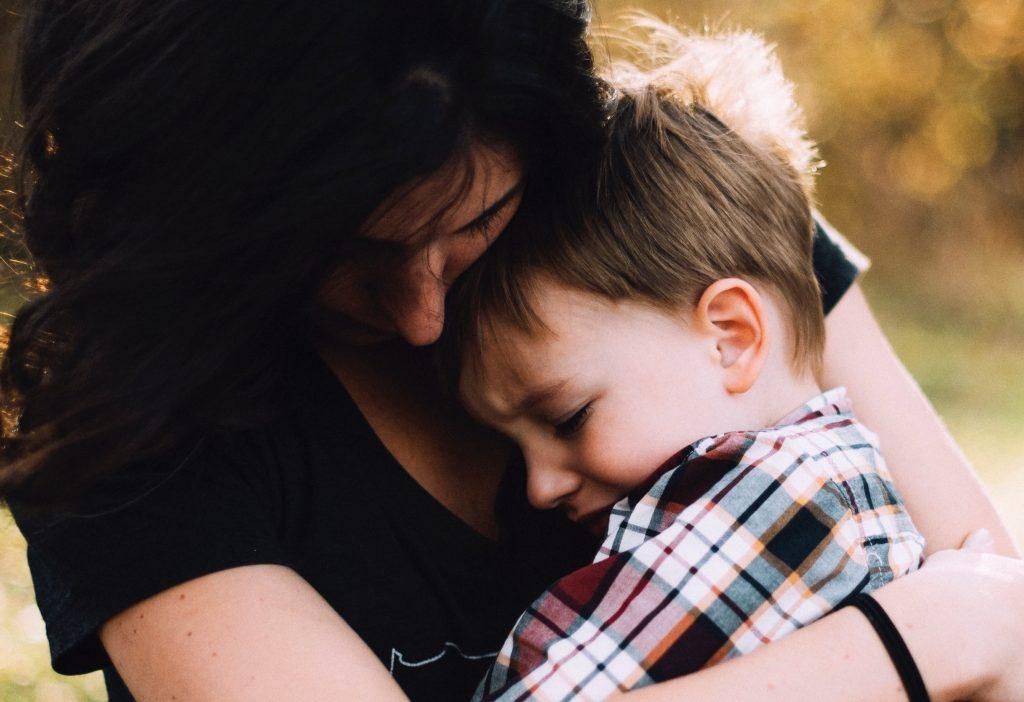How To Continue Parenting Following the Loss of a Child

By Thrive Reno’s Perinatal Mood and Anxiety Disorders Program Clinical Lead and Therapist Amanda Boe, LMFT
After losing a child, it can be difficult to comprehend how to continue parenting your other child or children through your grief. You may face a rollercoaster of confusing emotions as you accept that your life will never be the same. As you process your grief, you may face some of the common parenting challenges listed below. So, in this blog you’ll find therapeutic advice for coping with each of these challenges. Through it all, you may never feel like life gets easier, but in time you can feel like you’re getting stronger.
Parenting Challenge Number One: Choosing How To Show Emotions in Front of Your Child or Children
When attempting to process your emotions following the loss of one of your children, you may find yourself grappling with whether you should show your grief, anger, and sadness to your living child or children or if you should mask your emotions to protect them from your pain.
How to Cope: Explain Your Emotions
Though parents may believe they are successfully hiding their emotions from their children, children are often very tuned into their parents’ moods. When parents mask their emotions, children may begin to believe that emotions are scary, unpredictable, and meant to be hidden.
For children to feel safe experiencing their own emotions, they need to witness their parents experience the full range of their emotions without losing control.
When your child sees you feeling sad, you might explain how you are processing your emotions at that moment. For example, when you’re struggling with sadness you could say to your child, “I feel sad. When I feel sad, I sleep a lot. I would really love a hug from you to help comfort me.” You can take this exercise further by asking your child to explain how they experience sadness.
By articulating your emotions, your children won’t have to guess how you’re feeling. They’ll also learn that experiencing emotions is not something to fear and instead emotions should be embraced and processed.
Parenting Challenge Number Two: Feeling Like You’re Failing as a Parent
With a new understanding of the fragility of life, you may find yourself driven by the desire to make every moment with your family special. The pressure to be a perfect parent may seem to become more intense and you may overextend yourself. At the same time, as you grieve, exhaustion and hostility can envelop you, and you may become irritated and angry at your family. As a result, you may find yourself trapped in a cycle of grief and guilt.
How to Cope: Remember That It’s Impossible To Be Perfect
Losing a child is traumatic. After experiencing a traumatic event, our brains instinctually engage in fight, flight, and freeze responses. Although these instinctual responses may make you feel like you’re doing something wrong, this is the brain’s way of protecting and nurturing you. Give yourself a break, be gentle to yourself, and practice the same patience and compassion with yourself as you would offer to others.
Parenting Challenge Number Three: Honoring Your Lost Child While Remaining Present for Your Family
How to Cope: Connect to Your Loss Without Allowing It To Consume You
The experience of grief is different for everyone. Honor your loss in a way that matches the waves of your grief.
When I experienced my first miscarriage, I was taken aback, scared, and lost. While I was processing my loss, my dear friend brought me flower bulbs and pumpkin bread.
I planted the flower bulbs and indulged in the sweet treat which allowed me to embrace a mindful moment with my grief. I later ended up experiencing two more pregnancy losses, which gave me the opportunity to offer myself the same gesture of planting flower bulbs and indulging in a meaningful treat.
In the springtime, my blooming flowers offer a representation of the beautiful resiliency in the face of grief. When I see my budding tulips, I feel strong, hopeful, and sad all at once, as well as grateful for all the work I put in to further my healing and growth.
RESOURCES FOR CHILDREN OF GRIEVING PARENTS
I’ve listed some of my favorite children’s books along with excerpts of their Amazon descriptions, that may help support your family through the grieving process:
- The Invisible String by Patrice Karst — “Offers a very simple approach to overcoming loneliness, separation, or loss with an imaginative twist that children easily understand and embrace, and delivers a particularly compelling message in today’s uncertain times.”
- The Memory Tree by Britta Teckentrup — Helps “children celebrate the memories left behind when a loved one dies.”
- The Rabbit Listened by Cori Doerrfeld — Explains “how to comfort and heal the people in your life, by taking the time to carefully, lovingly, gently listen.”
- In My Heart: A Book of Feelings by Jo Witek — “Explores a full range of emotions, describing how they feel physically, inside, with language that is lyrical but also direct to empower readers to practice articulating and identifying their own emotions.”
A PLACE TO GROW
Thrive is dedicated to ensuring caregivers are cared for, supported, and nurtured, especially following the loss of a pregnancy, baby, or child. We offer grief counseling for individuals, couples and families. We also hold a complimentary Perinatal Loss and Grief Support Grou p for parents struggling with a perinatal loss. Give us a call to learn more about our therapeutic services.
About the Author
Amanda Boe, LMFT — PMAD Program Clinical Lead and Therapist
Amanda Boe earned her master’s degree in counseling from the University of Nevada, Reno. She has over nine years of experience working with children, individuals and families who have experienced trauma. Her experience also includes working with clients who struggle with perinatal mood disorders, anxiety, and depression. Amanda is passionate about healing relationships among families and unresolved trauma using evidence-based practices. She is certified in Child-Parent Psychotherapy (CPP). Amanda offers individual, couples, and family therapy.
The post How To Continue Parenting Following the Loss of a Child first appeared on Thrive Wellness.








